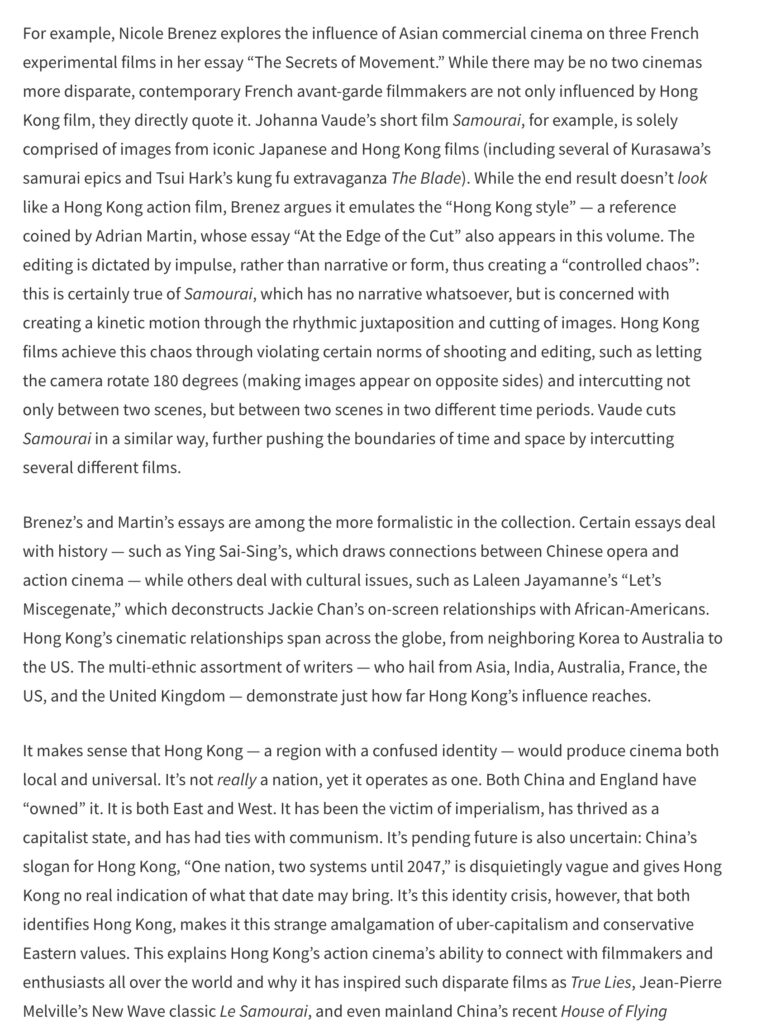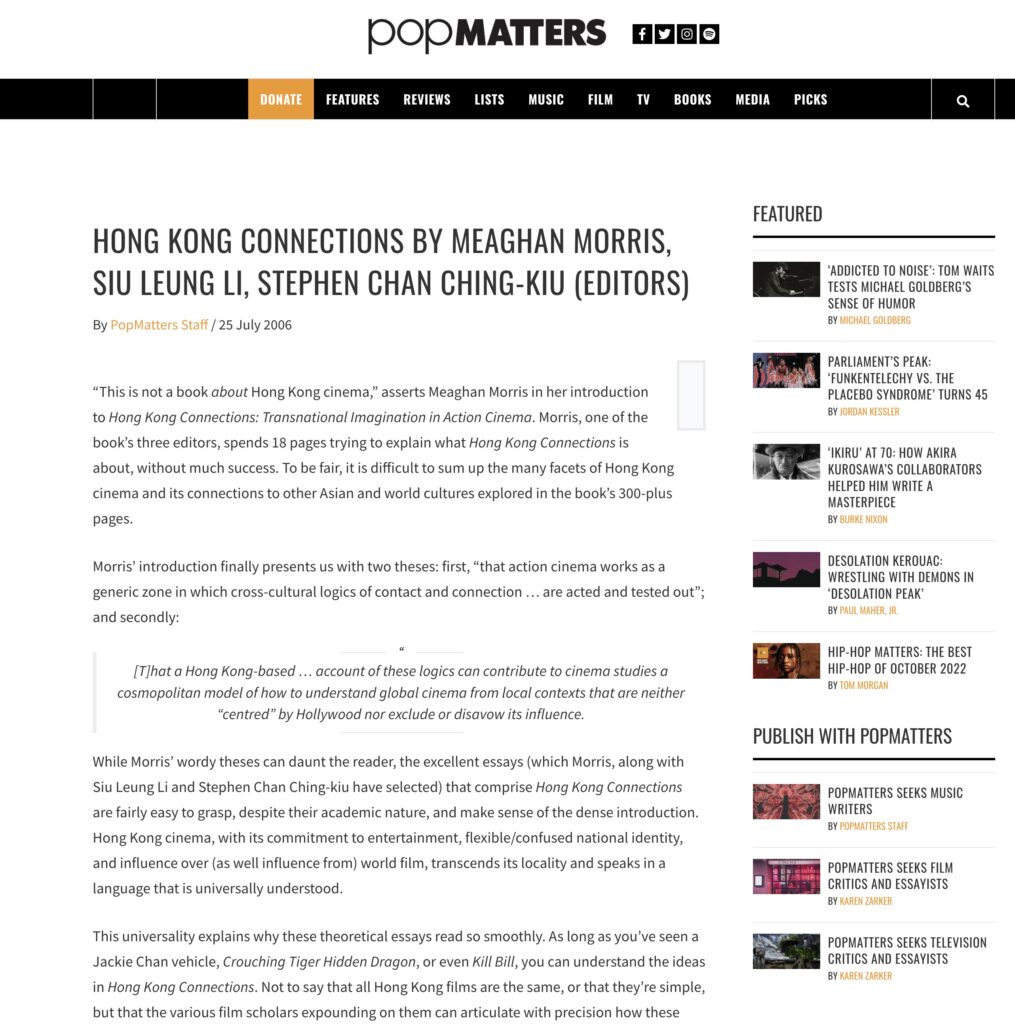Hong Kong Connections
Read the review online : « Transnational imagination in Hong Kong cinema » by Raquel Laneri
For example, Nicole Brenez explores the influence of Asian commercial cinema on three French experimental films in her essay “The Secrets of Movement.” While there may be no two cinemas more disparate, contemporary French avant-garde filmmakers are not only influenced by Hong Kong film, they directly quote it. Johanna Vaude’s short film Samourai, for example, is solely comprised of images from iconic Japanese and Hong Kong films (including several of Kurasawa’s samurai epics and Tsui Hark’s kung fu extravaganza The Blade). While the end result doesn’t look like a Hong Kong action film, Brenez argues it emulates the “Hong Kong style” — a reference coined by Adrian Martin, whose essay “At the Edge of the Cut” also appears in this volume. The editing is dictated by impulse, rather than narrative or form, thus creating a “controlled chaos”: this is certainly true of Samourai, which has no narrative whatsoever, but is concerned with creating a kinetic motion through the rhythmic juxtaposition and cutting of images. Hong Kong films achieve this chaos through violating certain norms of shooting and editing, such as letting the camera rotate 180 degrees (making images appear on opposite sides) and intercutting not only between two scenes, but between two scenes in two different time periods. Vaude cuts Samourai in a similar way, further pushing the boundaries of time and space by intercutting several different films.


